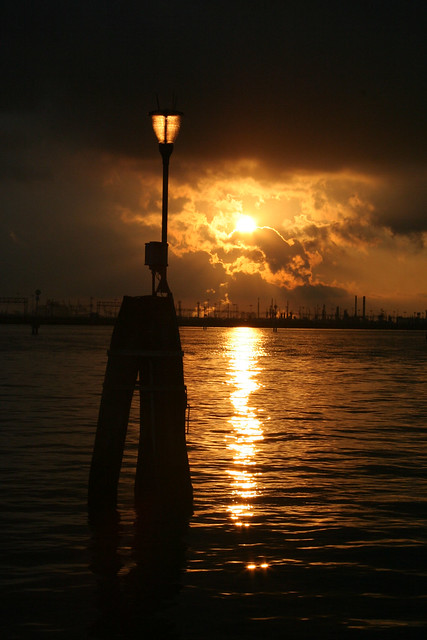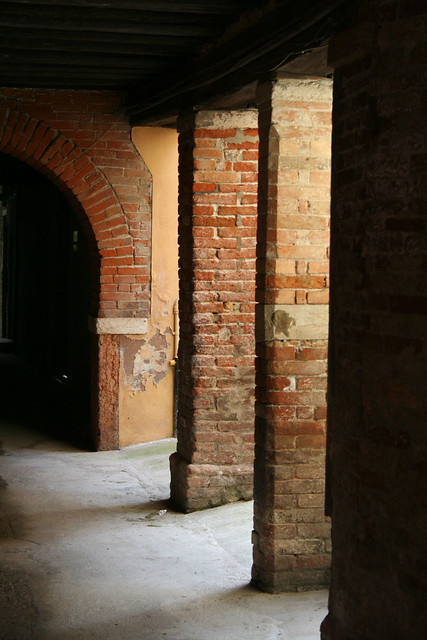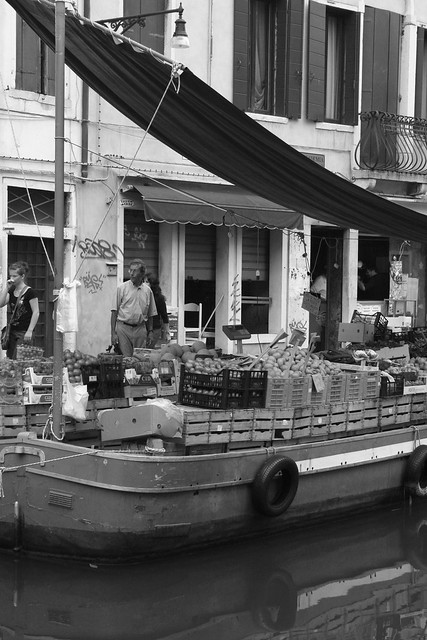Ask a Local: What Should I Do/See/Eat in Venice, Italy?
Welcome back to Ask a Local, a series of posts in which I interview locals all over the world about what to see, where to go, what to eat, and how to fit in in their city or town.
Today, I’m happy to introduce you to Jennifer Dombrowski, an expat living long-term in the Venice area, and whose full interview you can find in Italy: 100 Locals Tell You Where to Go, What to Eat, & How to Fit In.
First, tell us about you.
I was born and raised in Pennsylvania, moved to Las Vegas for college, and then lived in Arizona and Italy with my husband. We’ve been living in Italy for five years now and what an experience it has been! In my free time, I like to go to Italian markets and read. Now that it’s nearly summer, I can be found playing at the beach with my dog, Emma.
If someone is visiting Venice for the first time, what do you recommend they see or do?
The best thing to do for first time visitors to Venice is to just walk around and get lost. (Don’t worry; you can’t get too lost. You are on an island, after all.) Some not-to-be-missed highlights are the Rialto Bridge, St. Mark’s Cathedral, and Doge’s Palace. Take a vaporetto (water bus) over to the island of Murano and forget the over-priced Disneyland-like gondola ride—take gondola rowing lessons instead.
What neighborhoods or parts of town are best to stay in?
Venice is pretty small, so everything is close to the center. I personally like Cannaregio, the northernmost of the six historic sestieri (districts) of Venice. It’s the off-the-beaten-path area of Venice packed with delicious bàcari (wine bars) and locals.
Let’s talk about day trips…what nearby places should everyone make sure to visit?
Venice is just one of hundreds of islands in the Venetian Lagoon and you can easily use the vaporetto to visit Murano, which is famous for its glass making factories, or Burano, which is famous for its lace making. Hop on the train and visit Verona, the inspirational setting of Letters to Juliet. You can also rent a car for the day and travel Italy’s wine roads, sipping bubbly Prosecco or velvety Amarone.
Tell us about the local dishes. What should people try?
When people think of Italian food, the food they know is an Americanized version of southern Italian dishes. Venetian dishes are much different. The best way to experience Venetian food is to take a cicchetti tour. Cicchetti (pronounced chi-KET-tee) are like Spanish tapas—small snacks or side dishes that are prepared fresh daily. The Venetian thing to do is eat a couple at each bàcari. A couple of my personal favorites are all located just steps away from the Rialto Bridge and frequented by locals.
 |
Did I mention that I wrote a book full of these interviews? Get 100 interviews from top chefs, wine experts, and locals all over Italy. |

What are your top three favorite bars and restaurants?
For cicchetti, try: Cantina Do Mori at Sestiere San Polo 429 or All’Arco at San Polo 436. For a sit down, you can’t go wrong by booking a table at L’Alcova (at Campo Santa Sofia). Executive Chef, Josef Klostermaier, likes to put his own unique spin on traditional Venetian cuisine and he even takes the traghetto gondola across the Grand Canal to personally hand-select fresh fish and vegetables from the Rialto Market daily.
Is there anything tourists do that locals find rude or strange? What can we do to better fit in with the culture?
Venetians are definitely no strangers to tourists. But something tourists can do is remember that the calle (streets) are very narrow. Don’t walk with your group side by side, especially when there is pedestrian traffic.

Where can we go to take beautiful photos?
Venice is very picturesque. Of course, everyone knows photos of the Rialto Bridge and Piazza San Marco. But wander around and you’ll find colorful laundry precariously hanging above canals and bursts of bright pink azaleas climbing the old brick walls.
Anything else you want us to know?
If you’re coming to Italy, surely you’ll be eating a lot of gelato. Here’s a tip for being able to tell the fake stuff from artisanal gelato: always check the banana, mint, or pistachio for their coloring. Artisanal gelato uses only fresh, natural ingredients so banana will be slightly gray, mint will be white, and pistachio will be a muted gray-green.

Find Jennifer at luxeadventuretraveler.com.
Comments
-
-
Pam
Love Venice! the first Jewish ghetto is there and it’s an amazing experience. Once tourists get past the sales booths at the entrance, pretty much every inch of the island has unique little finds.
-
Pingback: Links to love | Element of Chic

Jenny P
Oh how I wish I’d read this post two weeks ago. We loved Venice and found a great gelateria, but we didn’t have much luck finding great bars. We will have to return.